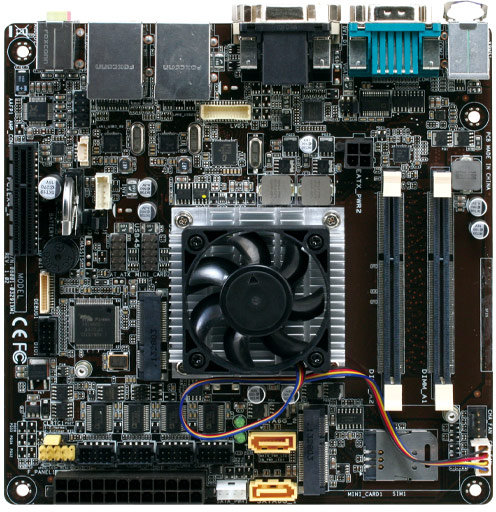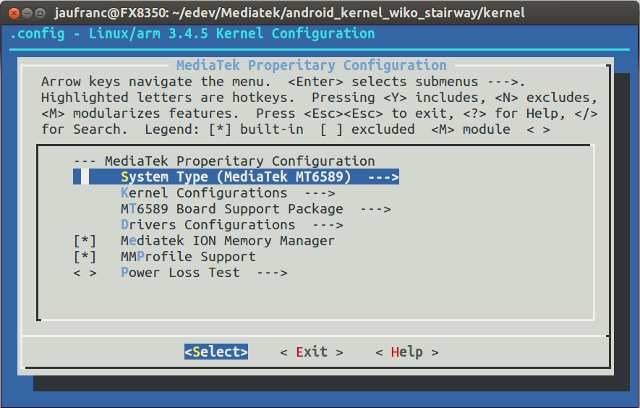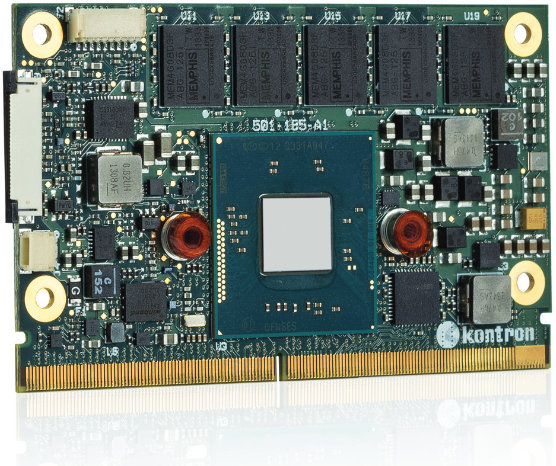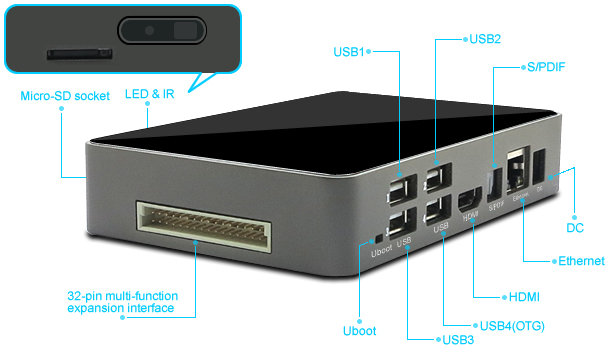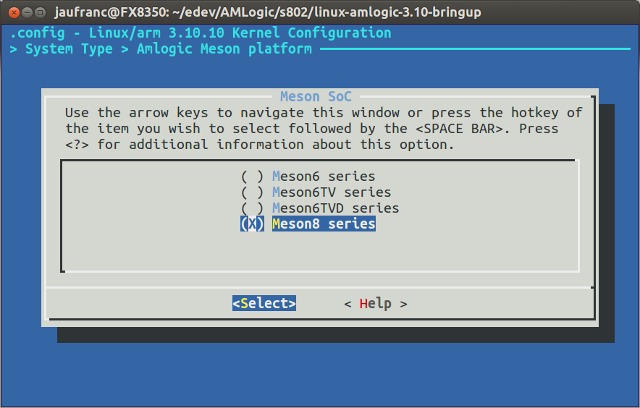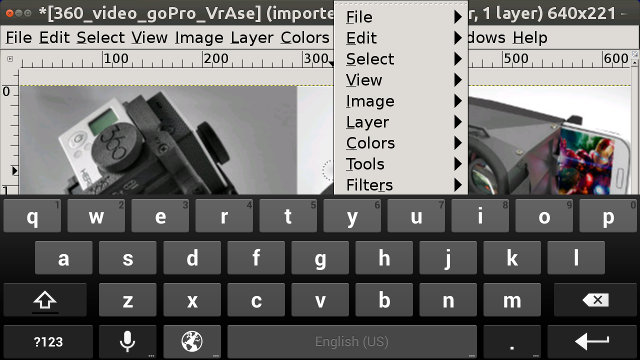I’ve had countless and recurrent crashes caused by Adobe flash plugin either in Firefox and Chromium, mainly while playing videos from YouTube or other online video services that still mostly use flash, instead of HTML5. Adobe flash death is certain, but up to now it has been soooo slow, so I doubt that thing will truly die any time soon, and unfortunately it will probably be with us for many years to come. To work around the issue, I started by enabling Youtube HTML5 player, and try to play embedded videos inside YouTube instead of the orignal website. I still had crashes from time to time, and this method did not help with other video services. So I decided to check out what I could do to fix the issue. When you go to http://www.adobe.com/software/flash/about/ you can check your flash version, and Adobe will also list the player version for […]
AAEON EMB-KB1 AMD G-Series SoC based mini-ITX Embedded Motherboard
AMD announced their G-Series SoC combining CPU, GPU and chipset in a single chip nearly a year ago, but AAEON EMB-KB1 is the first mini-ITX board I’ve ever heard of using these embedded SoCs. The board features first generation AMD SoCs in dual and quad core configuration, with up to 16GB RAM, up to 9 USB interfaces, 2 SATA III ports, and 2 USB 3.0 ports. AAEON EMB-KB1 hardware specifications: SoC GX-420CA quad-core CPU @2.0GHz with AMD Radeon HD 8400E GPU @600MHz – 25W TDP GX-217GA dual-core CPU @1.65GHz with AMD Radeon HD 8280E GPU @450MHz – 15W TDP System Memory – 2x SODIMM sockets for up to 16GB DDR3/DDR3L @ 1600MHz/1333MHz Storage – 2x SATA III (6.0Gb/s) I/O Chipset – Fintek F8186D-I Connectivity – 2x Gigabit Ethernet (Realtek 8111F) Video Output – 1x LVDS, 1x VGA, and 1x DVI up to 1080p or 1920×1200 Audio – Mic-in, line-out, and […]
Mediatek MT6589 Linux Source Code, CyanogenMod 11 Image for Wiko Stairway Smartphone
Mediatek and their customers have still not gotten into the habit of complying with the GPL license, and releasing the relevant source code such as the Linux kernel. There appears to be at least one smartphone, Wiko Stairway, where the Linux kernel has been released, and chrmhoffmann, a members of XDA developers forums, has even released on unofficial CyanogenMod 11 ROM (Android 4.4.2 Kit Kat) for the device. There are three source repositories for the Linux kernel, “android device“, and Android. I’ve only looked into the kernel which is version 3.4.5. Mediatek has apparently messed up the Linux kernel quite a bit, and you’ll have to do some funny things to build the kernel, and all Mediatek options in menuconfig are in a sub-section called “Mediatek Properitary Configuration” (sic.), and it’s not possible to simply go to System Type menu to change the processor type for instance. Let’s get the […]
Kontron SMARC-sXBTi is a SMARC Module Powered by Intel Atom E3800 Series SoC
Kontrol has unveiled a computers-on-module based on the SMARC standard, previously ULP-COM, based on Intel Atom E3800 “Bay Trail-I” SoCs with up to 8GB LPDD3 memory, up to 64GB SSD, and support for various interface. After having released SMARC modules based on TI, Freescale and Nvidia last year, the company claims their SMARC-xXBTi is the first ever x86 CoM compatible with SMARC. SMARC-sXBT(i) specifications: SoC – Intel Atom E3800 “Bay Trail-I” with Intel Gen 7 Graphics System Memory – Up to 8GB DDR3L-1067/1333 (1.35V) with optional ECC Storage – 2-32 GB eMMC (SLC), 4-64GB for (MLC), 1x or 2x SATA 3Gb/s, 2x SDIO interfaces Display HDMI 1.4 up to 2560 x 1600 @ 60Hz 18/24-bit single channel LVDS up to 1366 x 768 (Optional eDP to have higher resolutions) Connectivity – Gigabit Ethernet (Intel Springville I210) USB – 1x USB 3.0 (via AFB), 2x USB 2.0, and optional USB OTG. […]
Dedicated Hosting Services on ARM Development Boards (Cubieboard2, Raspberry Pi, ODROID…)
At least two companies have recently launched hosting services using dedicated ARM servers based on low cost development boards: NanoXion with its NX-BOX service powered by PiBox (Raspberry Pi) and CubieBox (Cubieboard 2) microservers, and miniNodes with servers based on Cubieboard2 first, then ODROID development boards, and possibly AllWinner OptimusBoard once/if it becomes available. The PiBox will feature a Raspberry Pi Model B with 512 MB RAM, and 16GB Class 10 UHS-1 microSD card by Samsung, and the dual core Cubiebox comes with 1GB RAM and a Crucial M500 SATA III 120GB SSD. Both NX-BOXes run Linux Debian Server NX distribution, support instant remote reboot, with guaranteed 10 Mbps connectivity for IPv4 & IPv6, and unlimited bandwidth. The boards are all hosted in France. The company expects their ARM servers to be used as private cloud servers, backup servers, private chat servers, web servers, mail servers, DNS Servers, monitoring servers, and […]
ITEAD Studio IBOX Powered by AllWinner A20 Features a 32-Pin Hacker-Friendly Connector (Crowdfunding)
ITEAD Studio IBOX is a mini computer powered by AllWinner A20 dual core Cortex A7 processor with 1GB RAM and 4GB Flash, a few USB connectors, Ethernet and video/audio connector. This mini pc can run both Android & Linux, and features a 32-pin connector that allows to connect expansion boards. Let’s have a look at the specifications: SoC- AllWinner A20 dual core ARM Cortex-A7 @ 1 GHz + ARM Mali 400 MP2 System Memory – 1GB DDR3 RAM Storage – 4GB NAND Flash + microsd slot Video Output – HDMI Audio Output – HDMI, optical S/PDIF Connectivity – 10/100M Ethernet USB – 3x USB 2.0 host port, 1x USB OTG port (full size) Expansion – 32-pin proprietary connector with TV OUT, USB, LCD, UART, IR, CSI, SPI, SATA, GPIOS and power signals. Misc – LED , IR sensor, and U-boot button (FEL mode?) Power – 5V/2A 9V/2A Dimensions – 145 x […]
Amlogic GPL Source Code Release – Kernel 3.10, U-Boot, and Drivers (Wi-Fi, NAND, TVIN, Mali GPU)
Last month, I noticed Amlogic provided links to the Android SDK for S802 / M802 on their open source website, but the only way to get the source was to share your SSH public with Amlogic, so that they give you access. It did not happen, but the company has released the source for Linux 3.10.10, U-boot 2011.03, Realtek and Broadcom Wi-Fi drivers, NAND drivers, “TVIN”drivers, and kernel space GPU drivers for Mali-400 / 450 GPU. There are also some customer board files for Meson 6 only (AML8726-MX / M6) but they do not seem to match the kernel… If you want to build the kernel, including the drivers, you’ll need to download a bunch of files: wget http://openlinux.amlogic.com:8000/download/ARM/kernel/arm-src-kernel-2014-03-06-d5d0557b2b.tar.gz wget http://openlinux.amlogic.com:8000/download/ARM/wifi/rtk8192du-2014-03-06-7f70d95d29.tar.gz wget http://openlinux.amlogic.com:8000/download/ARM/wifi/rtk8192eu-2014-03-06-9766866350.tar.gz wget http://openlinux.amlogic.com:8000/download/ARM/wifi/rtk8192cu-2014-03-06-54bde7d73d.tar.gz wget http://openlinux.amlogic.com:8000/download/ARM/wifi/rtk8188eu-2014-03-06-2462231f02.tar.gz wget http://openlinux.amlogic.com:8000/download/ARM/wifi/brcmap6xxx-2014-03-06-302aca1a31.tar.gz wget http://openlinux.amlogic.com:8000/download/ARM/wifi/wifi-fw-2014-03-06-d3b2263640.tar.gz wget http://openlinux.amlogic.com:8000/download/ARM/modules/aml_tvin-2014-03-06-fb3ba6b1c8.tar.gz wget http://openlinux.amlogic.com:8000/download/ARM/modules/aml_nand-2014-03-06-39095c4296.tar.gz wget http://openlinux.amlogic.com:8000/download/ARM/customer/aml_customer-2014-03-06-76ce689191.tar.gz wget http://openlinux.amlogic.com:8000/download/ARM/gpu/gpu-2014-03-06-0425a1f681.tar.gz You’ll need to extract these tarballs in specific directories:
|
1 2 3 4 5 6 7 8 9 10 11 12 13 14 15 16 17 18 19 20 21 22 23 24 25 26 |
tar xvf arm-src-kernel-2014-03-06-d5d0557b2b.tar.gz mkdir -p hardware/amlogic/ mkdir -p hardware/wifi/realtek/drivers mkdir -p hardware/wifi/broadcom/drivers mkdir -p hardware/arm/ cd hardware/amlogic tar xvf ../../../aml_nand-2014-03-06-39095c4296.tar.gz mv aml_nand-amlogic-nand nand cd ../wifi/realtek/drivers tar xvf ../../../../rtk8192du-2014-03-06-7f70d95d29.tar.gz tar xvf ../../../../rtk8192eu-2014-03-06-9766866350.tar.gz tar xvf ../../../../rtk8192cu-2014-03-06-54bde7d73d.tar.gz tar xvf ../../../../rtk8188eu-2014-03-06-2462231f02.tar.gz mv rtk8188eu-8188eu 8188eu mv rtk8192du-8192du 8192du mv rtk8192cu-8192cu 8192cu mv rtk8192eu-8192eu 8192eu cd ../../broadcom/drivers tar xvf ../../../../brcmap6xxx-2014-03-06-302aca1a31.tar.gz mv brcmap6xxx-ap6xxx ap6xxx cd ../../../arm tar xvf ../../gpu-2014-03-06-0425a1f681.tar.gz mv gpu-r3p2-01rel3 gpu cd .. tar xvf ../../aml_tvin-2014-03-06-fb3ba6b1c8.tar.gz mv aml_tvin-amlogic-3.10-bringup tvin |
You […]
Xserver XSDL X Window Server for Android Allows You to Run Linux Apps in Android
It has been feasible to run Linux apps in Android by installing a Linux distribution in a chroot using some app such as Complete Linux Installer, and accessing the graphical application via VNC. I tested this solution with Ubuntu in Android using ODROID-X development board, and it worked fine, except the performance was rather poor. There’s now another solution with XServer XSDL app, X Window System server for Android, that can be used to stream application from a Linux PC or to launch app from a Linux distribution installed in your Android device. I’ve given a quick try in my Android phone, and after installing and running the app, it will give instructions to launch gimp in your Linux PC to use it in the phone: Launch these commands on your Linux PC env DISPLAY=192.168.0.100:0 metacity & env DISPLAY=192.168.0.100:0 gimp Just type this command line into a terminal, and gimp […]



